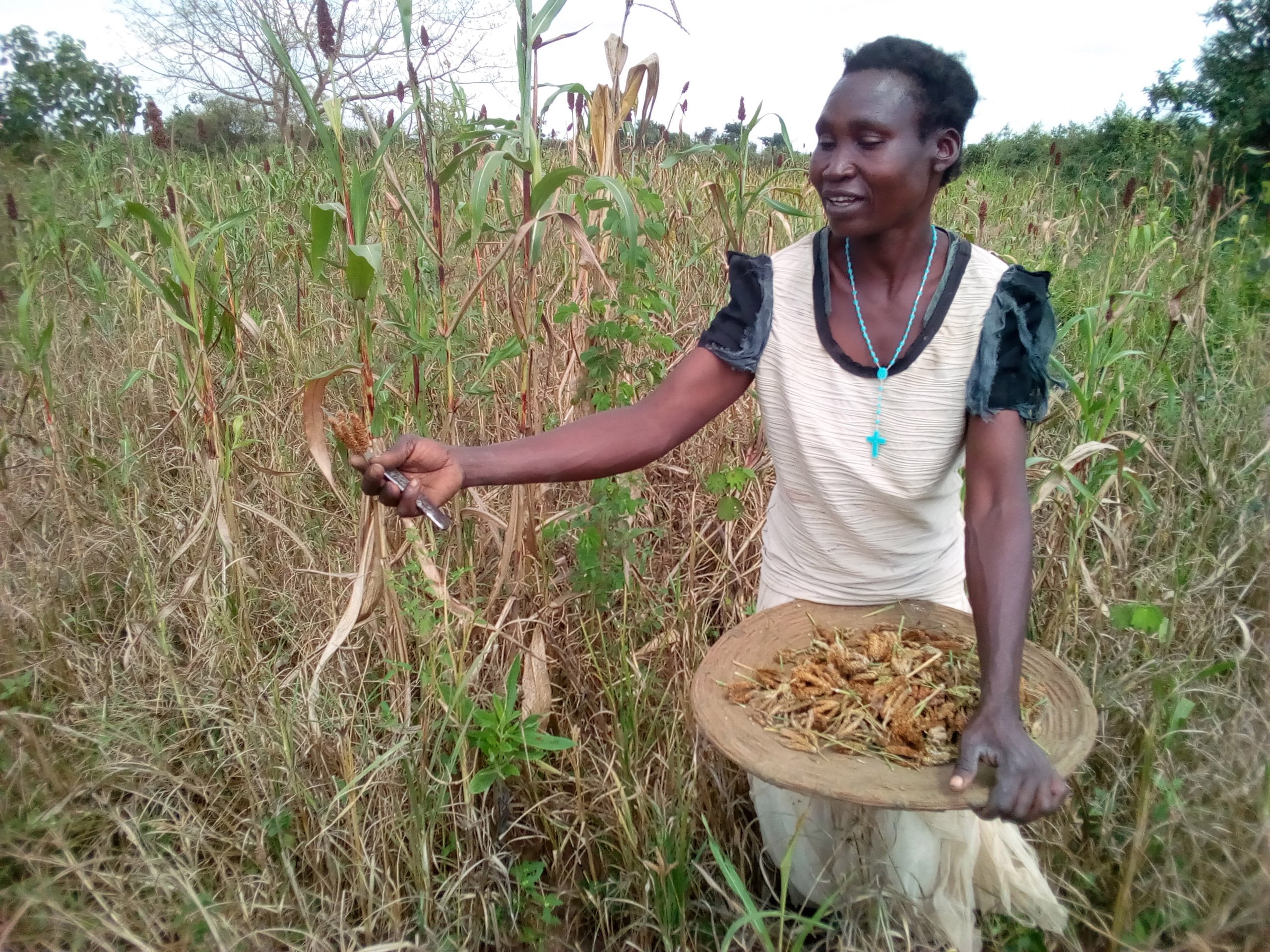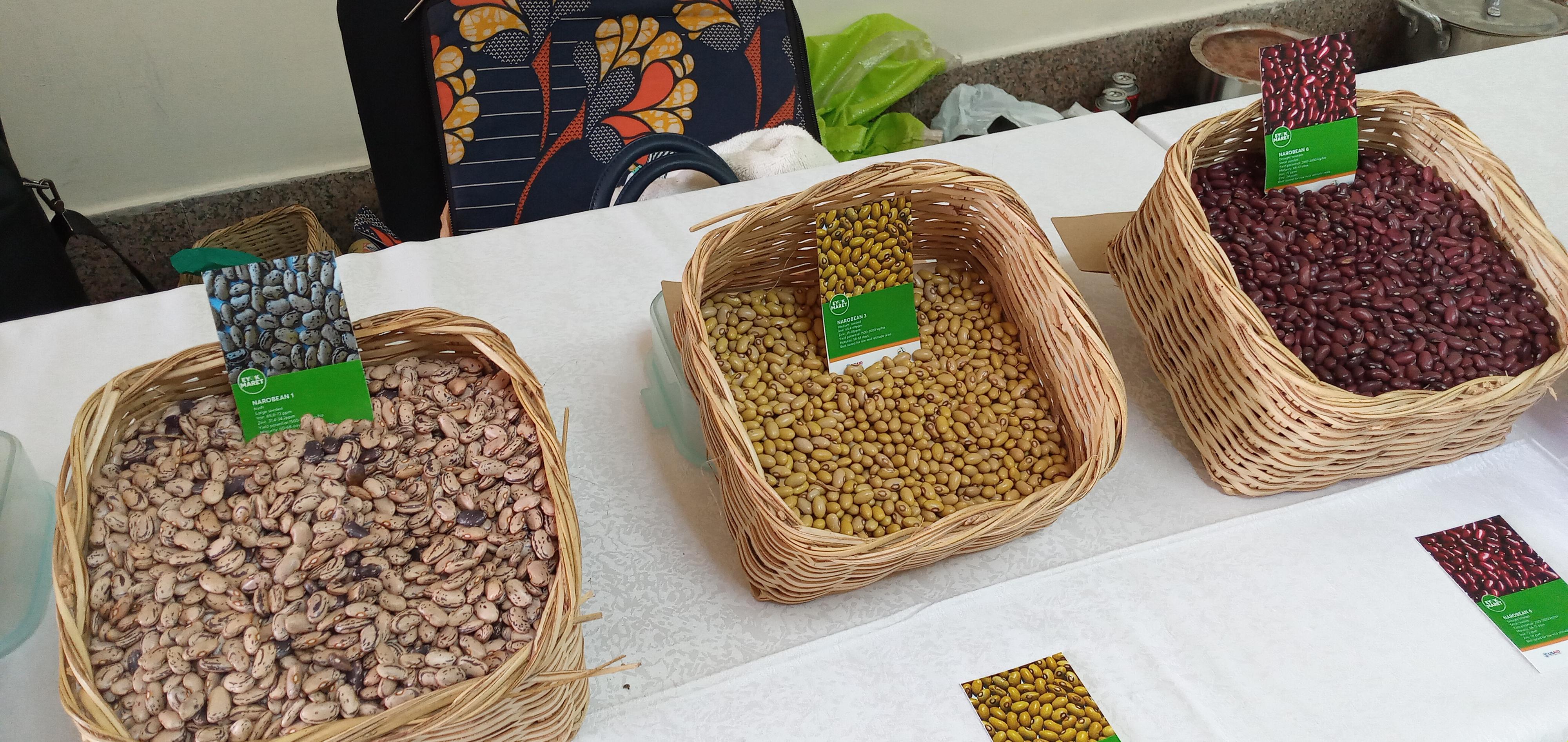Drop in millet yields puts Teso culture on the line

Ms Mary Apiding harvests millet in Obule Village, Soroti District, last year. PHOTO/GEORGE MURON
What you need to know:
- Millet, which is the main ingredient for making the local brew, has seen a drop in cultivation.
The decline in the production of millet is threatening the culture of Iteso in Eastern Uganda.
Iteso culture has for hundreds of years been hinged on finger millet with the tiny grain being used in almost every aspect of their cultural practices.
Finger millet has also contributed to the social and economic life of one of Uganda’s largest tribes.
However, in recent years, farmers in Teso Sub-region have shown little interest to grow the crop, citing poor yields, low commercial value, and labour intensity.
Mr Adamu Opolot, an 83-year-old and a resident of Kakungur Village, Malera Sub-county in Bukedea District, said finger millet has long lived in the hands of Iteso as the main ingredient for making local brew know as ajon.
The ajon has synonymously stayed on as the major identity of Iteso.
“Ajon, which is made purely out of millet, is the true identity of Iteso and this is the reason millet remains very important to us,” Mzee Opolot said.
He sticks to being a traditional Etesot who largely survives on millet bread known in the local dialect as Atap.
Mzee Opolot explained to Daily Monitor that finger millet has been “the gum holding the Iteso Culture together for generations” due to its social influence.
He said in the past, the growing of millet fostered communal work referred to as Eitai where groups of young men would come together to weed and harvest their millet and other crops.
“This communal work helped to build cohesion and helped even the weak not to lack food in their households,” he said.
Role of millet
“When Iteso sit in groups to drink their ajon, they are not just seeking to get drunk, but are sharing ideas and settling issues that affect them at their households,” Mzee Opolot said.
While performing cultural norms during childbirth and child naming among the Iteso, Mzee Opolot said millet is key as it is used for ‘anointing’ the newborn baby into the clan.
“This millet paste put on the child’s forehead is a sign of earth’s blessings, strength, and wisdom of the Iteso,” Mzee Opolot said.
Mzee Ekoroi Eminpasia, an elder and a coordinator of Iteso Culture Union in Bukedea District, said elders in Teso have in the past used millet as a yardstick for taming and checking the maturity of their girls towards marriage.
This, he said, was done by assessing their ability to thresh, winnow and grind millet; as a basis for her to be able to take care of her family.
“In the Iteso culture, the woman who cannot prepare millet in traditional ways is either below age or too lazy for a wife,” he said.
Mzee Eminpasia further explained that usually, a whole granary of millet would be emptied and spread at the compound, and other than assessing her ability to thresh it clean, relatives would also gauge her attitude when chasing away marauding chicken from the millet.
Mr Ekoroi now blames the influence of western cultures, which has made many people in Teso to neglect traditional practices associated with millet.
But Mr Stanley Okwi Etole, a farmer from Kakungur Village, Malera Sub-county in Bukedea District, said granaries, which have since disappeared, played an integral part in the production of millet.
He added that many farmers in Teso have resorted to growing crops that they can either sell or consume straight from the garden. “I don’t think culture should be a priority when we have bills to pay,” Mr Okwi said.
Mr Moses Okello, the senior agricultural officer in Soroti District, said the introduction of other crops has suppressed the demand for indigenous food crops.
“A number of indigenous crops dropped their yield. So many farmers have instead adopted new crop varieties, which are high in yields,” he said.
But Scovia Adikin, a senior research officer at the National Semi-Arid Cultural Research Institute, said millet has fallen in the market because not much has been done to diversify its products.
“There is low research, not much has been done to diversify the products from millet, the best we know about it is ajon and porridge,” she said.
Ms Adikin said the institute is carrying out research on millet to improve its market value.
“Intensifying research towards traditional food crops can develop different products like bread and beverages and this will create industrial demand hence increasing their demand and production,” she said.
Research
During the third edition of the National Agroecology Actors symposium held in Kampala in October 2021, it was noted that the production of cereals such as millet was on a decline.
“The market is inclined more towards fewer and fewer indigenous staples and once we don’t consume these foods, farmers will produce less of them,” part of the report read.
Naro tips farmers on millet
In a technical review session on the research for finger millet, pearl millet and sorghum at National Semi Arid Resources Research Institute (NaSARRI) in Serere District in August, the director general of Naro, Dr Ambrose Agona, said the research station is ready to provide the support needed to produce enough food.
Mr Faisal Kasule, a plant breeder in charge of pearl millet from Naro, said the new breed has capacity to stand the harsh climate in the semi-arid region, characterised by long drought, with very low rainfall levels. Kasule says pearl millet is a gem that is yet to be embraced by farmers.




